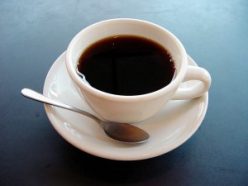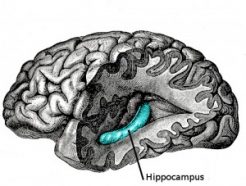Rats’ caffeine brain boost
A new experiment shows how rodent brains respond to the drug

Coffee drinkers swear by a morning cup of joe. The beverage delivers a dose of caffeine, a drug that fires up the body’s nervous system by exciting the brain. In a recent experiment, scientists decided to share coffee’s caffeine effects with laboratory rats to study the drug’s effect on the brain.
Researchers fed small doses of caffeine to the rats and found that the drug boosted activity in a part of the brain called the hippocampus. If researchers understand the science behind caffeine’s ability to fire up the brain, they might find a way to use that stimulation to lessen the symptoms of brain disorders.
“Caffeine is something people are very interested in,” neuroscientist Susan Masino, who did not work on the new study, told Science News. At Trinity College in Hartford, Conn., Masino studies the structure and function of the nervous system, which relays messages throughout the body.
Serena Dudek, a neuroscientist at the National Institute of Environmental Health Sciences in Research Triangle Park, N.C., did work on the new study. She told Science News that many experiments have looked at the effects of very high doses of caffeine. But in the new study, she and her colleagues wanted to understand more about how lower doses — closer to an average person’s daily consumption — affect the brain.
Caffeine’s action on a person depends on his or her body weight. If a 100-pound person and a 200-pound person drink the same amount of the same type of coffee, the influence will be stronger on the lighter person. To experience the same effects, the 200-pound person would have to drink more than the 100-pound person. Similarly, to see how a rat would react to an average cup of coffee, the scientists had to scale down the amount. They gave the rats 2 milligrams of caffeine for every kilogram (or 2.2 pounds) of body weight.

After rats consumed caffeine, electrical activity spiked within a region of the hippocampus called CA2. In humans, the hippocampus looks like a seahorse and helps with spatial memory, memories of how a place is organized. Nerve cells send electrical pulses to each other through synapses, which are the gaps between cells. When the rats had consumed caffeine, electrical signals increased in the synapses of the CA2 for several hours.
The scientists also tested the rats after giving them 10 times as much caffeine as in the first experiment. Electrical signals from nerve cells in the CA2 region were even stronger.
This study is the first to show that caffeine triggers electrical activity in the CA2 region. It’s too soon to know if or how this research will help humans. It does, however, suggest a route for further investigation.
At least in rodents, “we think this is the area most sensitive to caffeine,” Dudek told Science News.
POWER WORDS (adapted from the New Oxford American Dictionary)
caffeine A compound found especially in tea and coffee plants that is a stimulant of the central nervous system.
hippocampus A part of the brain thought to control some parts of emotion and memory.
nerve A whitish fiber or bundle of fibers that transmits impulses of sensation to the brain or spinal cord, and impulses from these to the muscles and organs.
synapse A small gap between two nerve cells across which electrical impulses pass.







